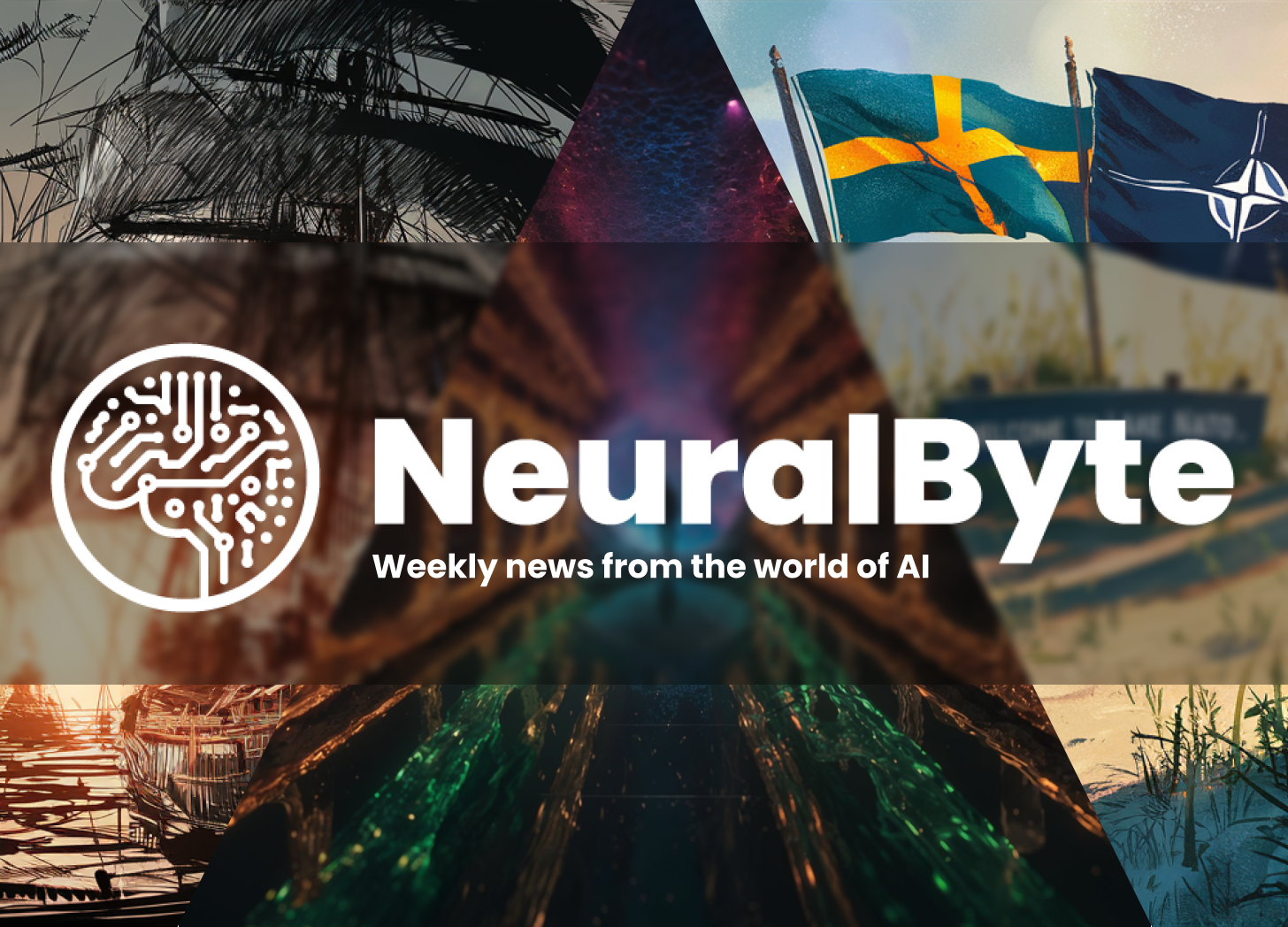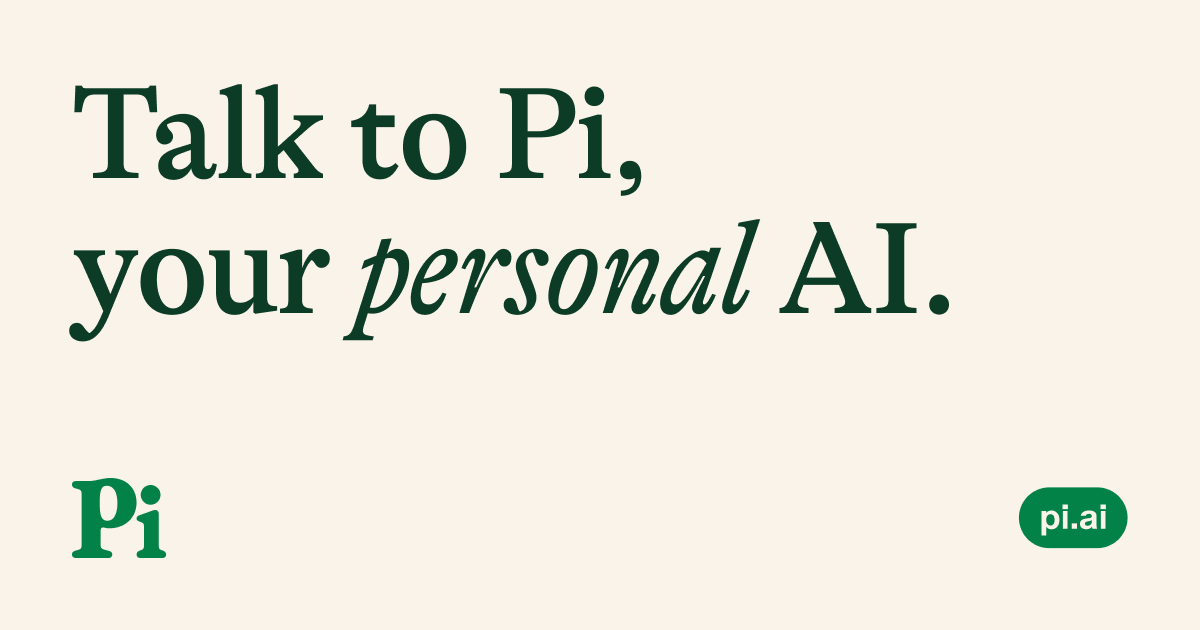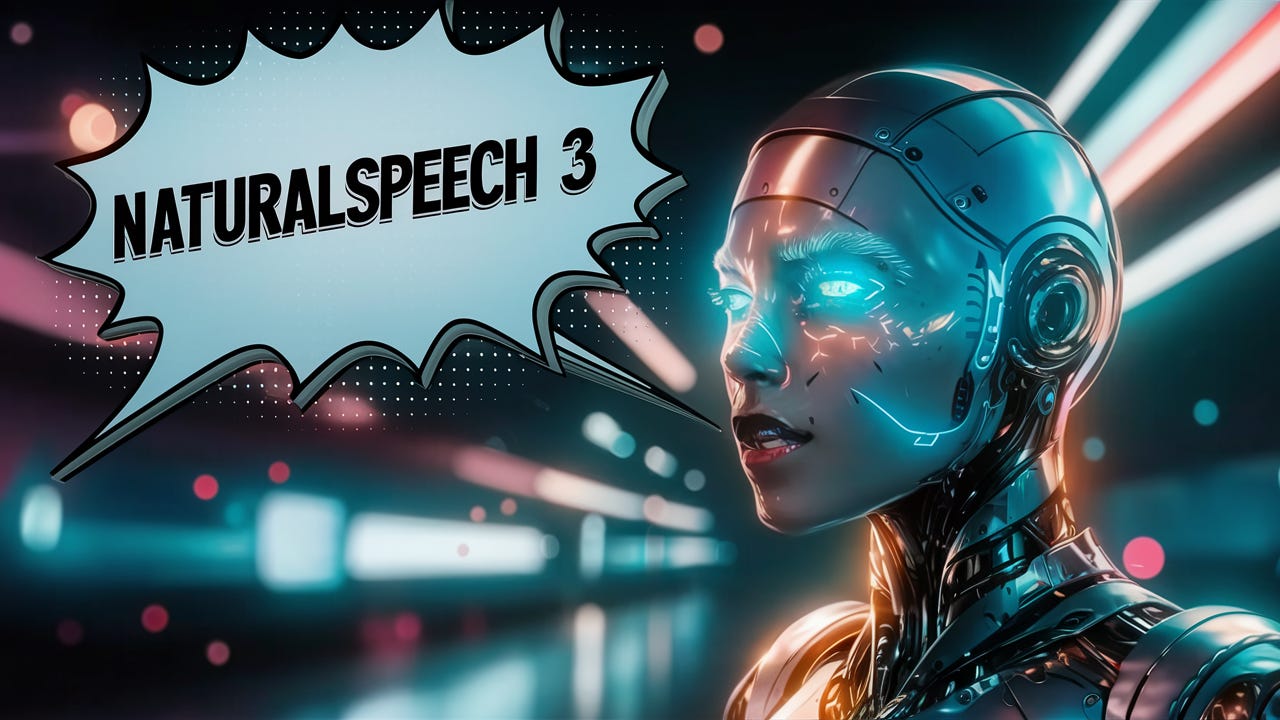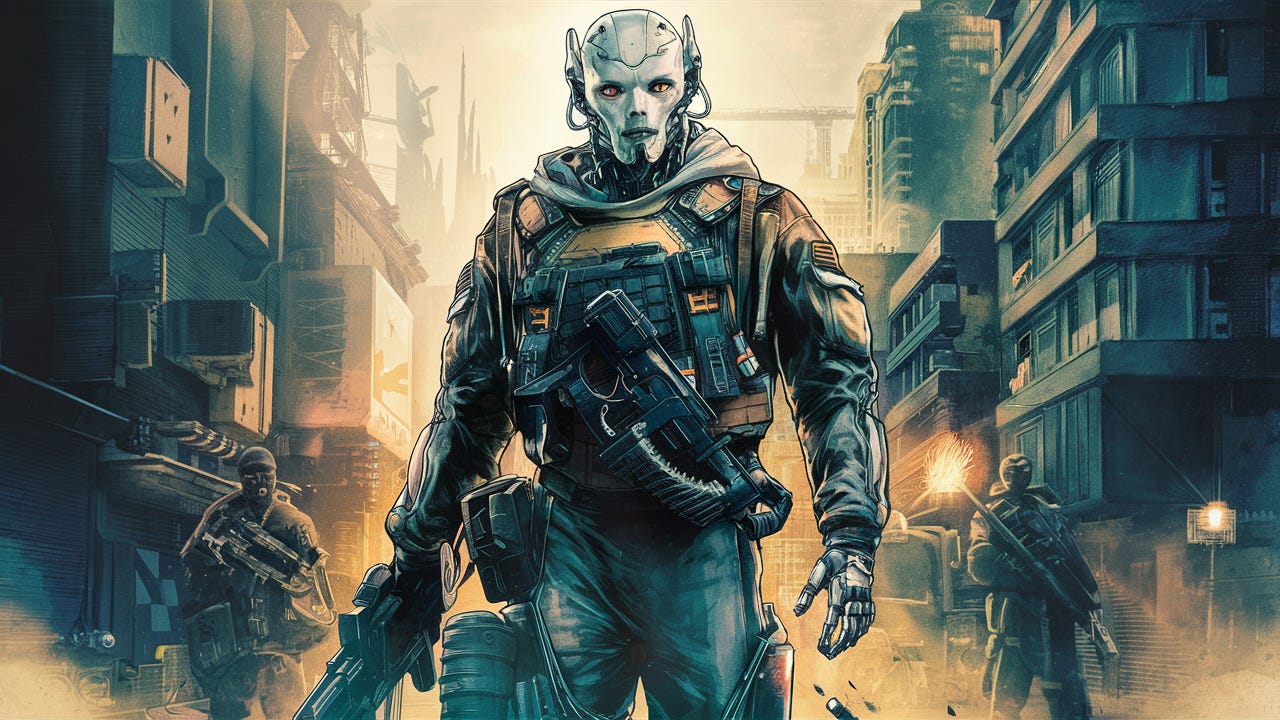NeuralByte's weekly AI rundown - 10th March
Get ready to dive into the latest AI advancements, including Anthropic's superior Claude 3, the legal clash between OpenAI and Elon Musk, and groundbreaking innovations in personal AI assistants and t
Greetings fellow AI enthusiasts!
In this edition, we unveil the highly anticipated Claude 3 from Anthropic, boasting unparalleled capabilities that leave OpenAI's offerings in the dust. Speaking of OpenAI, we delve into the juicy details of their legal tussle with Elon Musk, complete with revealing email exchanges. But that's not all – Inflection AI raises the bar with their cutting-edge Personal AI, while OpenAI introduces a game-changing read-aloud feature for ChatGPT. Prepare to be amazed by the advancements in text-to-speech synthesis courtesy of NaturalSpeech 3. Moreover, we explore the U.S. Army's strategic foray into AI-driven war game simulations and introduce you to the groundbreaking TripoSR, revolutionizing 3D modeling. Last but not least, brace yourself for RT-Sketch, a novel approach to robot task specification that's bound to captivate your imagination!
Dear subscribers,
Thanks for reading my newsletter and supporting my work. I have more AI content to share with you soon. Everything is free for now, but if you like my work, please consider becoming a paid subscriber. This will help me create more and better content for you.
Now, let's dive into the AI rundown to keep you in the loop on the latest happenings:
🤖 Anthropic Unveils Claude 3, Claiming Superiority Over OpenAI
📜 OpenAI Responds to Elon Musk’s Lawsuit with Revealing Emails
🔮 Inflection-2.5: Elevating Personal AI to New Heights
🗣️ OpenAI Introduces Read Aloud Feature for ChatGPT
💭 Advancing Text-to-Speech Synthesis with NaturalSpeech 3
⚔️ US Army Explores AI’s Strategic Prowess in War Game Simulations
🎮 Introducing TripoSR: Revolutionizing 3D Modeling
🤖 RT-Sketch: A Novel Approach for Robot Task Specification
And more!
Anthropic Unveils Claude 3, Claiming Superiority Over OpenAI
Anthropic, an AI unicorn, has made a bold claim with the release of Claude 3, its new series of large language models. On March 7, 2024, the company announced that these models are the most intelligent to date, surpassing those from OpenAI and Google. The announcement has stirred the AI community, as it suggests a significant leap in the capabilities of language models.
The details:
Claude 3 is the latest series of large language models released by Anthropic.
The company claims that Claude 3 outperforms rival offerings, including OpenAI’s and Google’s models.
This release marks a pivotal moment in the AI industry, potentially reshaping the competitive landscape.
Anthropic’s confidence in Claude 3 is evident, as they position it as the world’s most intelligent model.
The implications of this advancement are vast, with potential ripple effects across various sectors that rely on AI technology.
Why it’s important:
The release of Claude 3 by Anthropic is not just a technological milestone; it’s a statement about the future direction of AI. If Claude 3 lives up to its claims, it could redefine industry standards and expectations for what AI can achieve. For AI enthusiasts and business owners, this development could mean more sophisticated tools at their disposal, leading to enhanced decision-making and innovation. The AI landscape is evolving, and Claude 3 might just be the catalyst for the next wave of transformation.
OpenAI Responds to Elon Musk’s Lawsuit with Revealing Emails
In a striking turn of events, OpenAI has countered Elon Musk’s lawsuit by releasing early emails from the tech mogul, which suggest he once supported the idea that OpenAI needed substantial financial resources to achieve its AI goals. The emails reveal Musk’s initial push for a $1 billion funding target and his later proposal for Tesla to acquire OpenAI. Despite Musk’s departure and subsequent legal action, OpenAI has thrived, evolving into a for-profit entity valued at $90 billion and securing a $13 billion commitment from Microsoft. Amidst the legal tussle, OpenAI maintains its dedication to its mission and the safety of its AI products.
Inflection-2.5: Elevating Personal AI to New Heights
Inflection AI has announced the launch of Inflection-2.5, a significant upgrade to their personal AI, Pi. This new model promises to bring together high intelligence quotient (IQ) capabilities with the empathetic and helpful personality that users have come to appreciate in Pi. The upgrade is a testament to Inflection AI’s commitment to creating a personal AI for everyone, enhancing user experience with cutting-edge technology.
The latest iteration, Inflection-2.5, stands out by achieving performance levels competitive with the world’s leading large language models (LLMs) such as GPT-4 and Gemini, while utilizing only 40% of the computational resources required for training. This efficiency does not compromise quality, as Inflection-2.5 demonstrates substantial improvements across various industry benchmarks, particularly in STEM areas.
Inflection-2.5 is now available to all users of Pi, accessible through multiple platforms including iOS, Android, and a new desktop app. The update has already made a positive impact on user sentiment, engagement, and retention, contributing to organic user growth. With over four billion messages exchanged with Pi, users are engaging in longer and more diverse conversations, ranging from current events to coding assistance.
The details:
Inflection-2.5 merges high IQ with Pi’s empathetic personality, offering a more human-like interaction.
The model outperforms its predecessor and rivals with less computational power, marking a leap in AI efficiency.
Users can access Inflection-2.5 on various devices, ensuring a seamless AI experience.
The upgrade has led to longer user engagement and a broader range of conversation topics.
Inflection AI’s commitment to safety and alignment is evident in their rigorous evaluation process.
Why it’s important:
The launch of Inflection-2.5 is a game-changer in the realm of personal AI. It not only sets a new standard for efficiency and capability in AI models but also underscores the importance of creating technology that is both powerful and empathetic. As AI becomes increasingly integrated into our daily lives, the balance between raw computational power and a user-friendly personality is crucial. Inflection-2.5’s ability to provide high-quality, up-to-date information and assist with a wide array of tasks makes it an invaluable tool for individuals and businesses alike, paving the way for a future where personal AI is a trusted and integral part of our everyday interactions.
OpenAI Introduces Read Aloud Feature for ChatGPT
OpenAI has launched a new Read Aloud feature for ChatGPT, allowing the AI to read responses aloud in one of five voice options across 37 languages. The feature, which auto-detects the text language, is available on both web and mobile versions of ChatGPT and supports GPT-4 and GPT-3.5. This development follows the introduction of a voice chat feature in September 2023 and showcases OpenAI’s multimodal capabilities.
Advancing Text-to-Speech Synthesis with NaturalSpeech 3
NaturalSpeech 3 represents a significant leap forward in zero-shot speech synthesis. By breaking down speech into distinct subspaces such as content, prosody, timbre, and acoustic details, the system can generate each attribute individually, resulting in a more authentic and expressive speech output. This method stands in contrast to previous models that often struggled to balance these elements effectively.
The system’s innovative use of factorized vector quantization (FVQ) and diffusion models enables it to produce speech that rivals the quality of state-of-the-art TTS systems. The research team’s experiments demonstrate that NaturalSpeech 3 outperforms its predecessors in several key areas, including speech quality, similarity to the target voice, prosody, and overall intelligibility.
The details:
NaturalSpeech 3 utilizes a neural codec with factorized vector quantization to disentangle speech waveform into subspaces.
It employs factorized diffusion models to generate attributes in each subspace following its corresponding prompt.
The system achieves high-quality, natural-sounding speech with zero-shot synthesis capabilities.
Experiments show that NaturalSpeech 3 surpasses current TTS systems in quality, similarity, prosody, and intelligibility.
The research involved scaling the system to 1 billion parameters and training with over 200,000 hours of data.
Why it’s important:
The field of TTS is rapidly evolving, and NaturalSpeech 3’s approach to speech synthesis could revolutionize how we interact with AI systems. By producing more natural and expressive speech, this technology has the potential to enhance user experiences across various applications, from virtual assistants to audiobooks. Moreover, the ability to generate speech with zero-shot synthesis means that the system can produce high-quality voice output without the need for extensive training on specific voices, making it more versatile and accessible for different use cases.
US Army Explores AI’s Strategic Prowess in War Game Simulations
The US Army is venturing into the realm of artificial intelligence (AI) to enhance military strategy. Researchers at the US Army Research Laboratory have been conducting experiments using AI chatbots as advisors in war game simulations. These tests, performed within the virtual environment of the military science fiction video game Starcraft II, aim to determine if AI can improve battle-planning skills. The chatbots, powered by OpenAI’s GPT-4 models, were tasked with assisting a virtual commander in achieving mission objectives, such as seizing control points and eliminating enemy forces.
In a controlled experiment, the AI chatbots demonstrated their capability to quickly propose multiple strategies, showcasing their potential as tactical advisors. However, the experiment also highlighted the limitations of AI in complex scenarios. While the AI managed to complete its mission, it incurred more casualties compared to other AI agents, indicating that there’s room for improvement in AI’s decision-making processes.
The experiment’s success in a simplified scenario has sparked discussions about the feasibility and ethical implications of deploying AI in real-world conflicts. Experts caution against overreliance on AI for strategic military planning, emphasizing the current technological and ethical constraints. The US Department of Defense and tech giants like Palantir and Scale AI have identified numerous potential military applications for generative AI, yet the technology’s readiness for such high-stakes environments remains a subject of debate.
The details:
AI chatbots acted as strategic advisors in a military simulation game, suggesting tactics to virtual commanders.
The chatbots were powered by OpenAI’s GPT-4 models, which were recently updated to permit some military applications.
Despite achieving their objectives, the AI advisors suffered higher casualties than other AI agents.
The experiment raises questions about the practicality and morality of AI in complex, real-life military operations.
The Department of Defense is exploring a wide range of military applications for AI, in collaboration with tech companies.
Why it’s important:
The integration of AI into military strategy represents a significant shift in how battles could be planned and executed. AI’s ability to process vast amounts of data and generate rapid strategic options could revolutionize military operations. However, the reliance on AI also introduces new challenges, including ensuring the technology’s decisions align with ethical and legal standards. As AI continues to evolve, its role in national defense strategies will likely expand, necessitating careful consideration of its capabilities and limitations. This exploration into AI’s potential in military contexts underscores the importance of balancing innovation with responsibility.
Introducing TripoSR: Revolutionizing 3D Modeling
Stability AI, in collaboration with Tripo AI, has unveiled TripoSR, a groundbreaking tool that transforms single images into high-quality 3D models in under a second. This innovation is set to revolutionize the way professionals in entertainment, gaming, industrial design, and architecture visualize and create 3D objects.
TripoSR stands out for its speed and accessibility. It operates on low inference budgets and does not require a GPU, making it practical for a wide range of users. The model’s performance is impressive, with the ability to generate draft-quality textured meshes in approximately 0.5 seconds when tested on an Nvidia A100.
The details:
Rapid 3D Model Generation: TripoSR can create detailed 3D models from a single image in less than a second.
Accessible Technology: It runs efficiently even without a GPU, broadening its usability.
Open Source Availability: The model weights and source code are available under the MIT license for commercial, personal, and research use.
Technical Enhancements: TripoSR includes several improvements over the base LRM model, such as channel number optimization and mask supervision.
Community Engagement: Stability AI encourages developers, designers, and creators to contribute to the model’s evolution and discover its potential applications.
Why it’s important:
TripoSR’s ability to quickly generate 3D models from images is a game-changer for industries reliant on 3D visualization. Its speed and accessibility democratize the creation of 3D content, enabling more creators to bring their visions to life without the need for expensive hardware. Moreover, the open-source nature of TripoSR fosters a collaborative environment where improvements and innovations can continuously evolve, driven by a community of users and developers. This tool not only streamlines workflows but also has the potential to inspire new forms of creativity and design across various sectors.
RT-Sketch: A Novel Approach for Robot Task Specification
In the realm of robotics and artificial intelligence, the RT-Sketch system emerges as a groundbreaking method for instructing robots using hand-drawn sketches. Developed collaboratively by Stanford University, Google DeepMind, and Google Intrinsic, this innovative technology addresses the limitations of ambiguous language and overly detailed images in goal-conditioned imitation learning. RT-Sketch allows users to provide simple sketches that convey spatial awareness and task relevance, enabling robots to perform complex manipulations with greater precision and robustness.
The system’s ability to interpret various levels of sketch detail, from minimal line drawings to colored, detailed images, marks a significant advancement in human-robot interaction and paves the way for more intuitive and efficient task specification. This approach not only matches the performance of image or language-conditioned agents in straightforward settings but also excels in scenarios with ambiguous instructions or visual distractions, showcasing its potential to revolutionize the field of robotic assistance.
Be better with AI
In this section, we will provide you with comprehensive tutorials, practical tips, ingenious tricks, and insightful strategies for effectively employing a diverse range of AI tools.
Consistent characters with Remix AI
Explore the "face-to-sticker" model on Replicate. You can experiment with it for free.
Pick a suitable photograph and upload it. Ideally, opt for an image with sufficient contrast between a solid background and the primary subject.
Tailor the prompt to closely match your chosen picture and tinker with the various settings the model provides, such as width, height, seeds, or even upscaling.
Click "Run" and witness your image transform into a captivating sticker effortlessly.
Tools
🖼️ Instanice - Aesthetic photo effects in seconds (link)
🤖 alpaca - Generative art tools that work alongside you (link)
🎨 StickerBaker - Open Source AI Sticker Maker (link)
💻 Recaster - Turn Your Web Images Into SEO-Content (link)
🧠 WisdomPlan - AI-powered learning: Master any skill, your way (link)
We hope you enjoy this newsletter!
Please feel free to share it with your friends and colleagues and follow me on socials.







